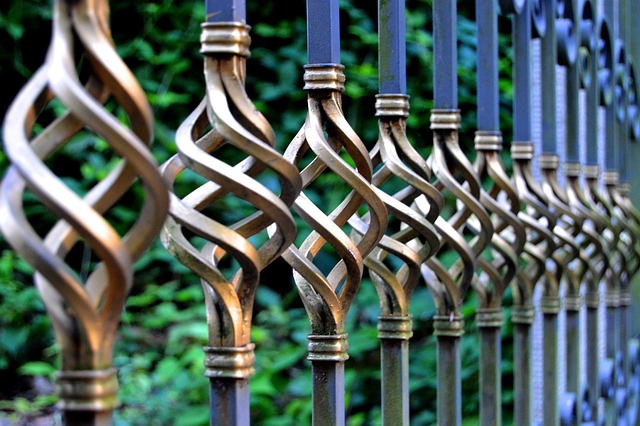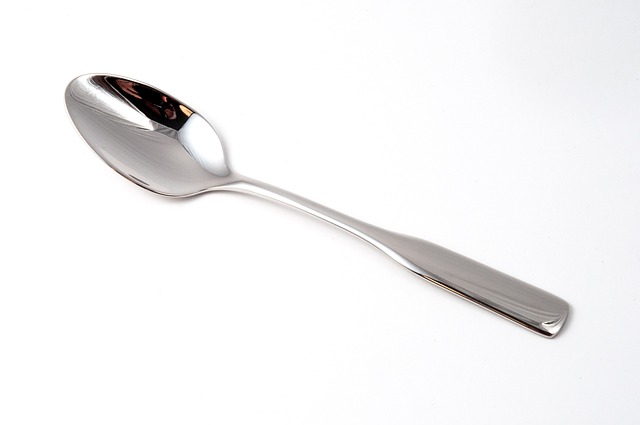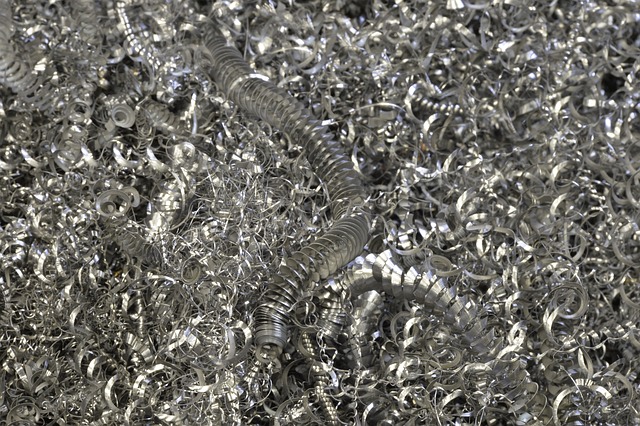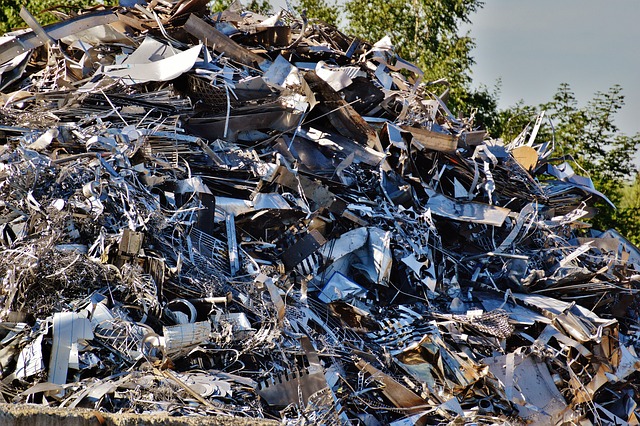Metal significantly enhances modern residential renovations by adding a contemporary flair and ensuring durability, especially in high-use areas and regions with harsh weather. Its robustness and versatility make it ideal for both structural support and architectural design elements, with metalworkers creating custom pieces that last. Different types of metal, such as stainless steel for hygienic kitchens and galvanized steel for outdoor resistance to rust, are chosen based on their unique properties to meet specific renovation needs. Metal's presence is both prominent, like in custom railings, and covert, like in support beams, contributing to a home's aesthetic and functional integrity. The selection of metal type, finish, and design should align with the homeowner's vision for a blend of contemporary look or long-lasting functionality, emphasizing the importance of professional metalworking expertise in renovations. With stainless steel, copper, and aluminum leading the way, metal in homes offers both practical benefits like easy cleaning and healthier living environments through materials like copper's natural antimicrobial properties. The use of advanced fabrication technologies enhances the precision and beauty of custom metalwork, which can also be sustainable by using recycled metals, catering to homeowners who value style, functionality, and environmental responsibility in their renovations.
Explore the transformative impact of professional metalworking on residential renovations. This article delves into how incorporating various metals enhances both the aesthetics and functionality of homes, providing a robust guide to integrating these materials effectively. From selecting appropriate types of metal for home improvement projects to showcasing innovative techniques that align with modern design sensibilities, readers will discover a wealth of information on the role of metal in elevating residential spaces. Join us as we highlight how metal finishes and designs can offer both a timeless allure and practical benefits to your renovation endeavors.
- Understanding the Role of Metal in Residential Renovations
- Types of Metal Suitable for Home Improvement Projects
- Innovative Metalworking Techniques for Modern Home Renovations
- Enhancing Aesthetics and Functionality with Metal Finishes and Designs in Residential Spaces
Understanding the Role of Metal in Residential Renovations

Metal plays a pivotal role in residential renovations, offering both form and function to homes across the country. Its durability and versatility make it an ideal choice for various applications, from structural supports to intricate architectural details. Professional metalworkers bring expertise in designing and crafting custom pieces that can stand the test of time, enhancing both the aesthetic appeal and structural integrity of a home. These artisans work with a range of metals including steel, aluminum, and copper, each offering unique properties suitable for different needs within a renovation project. The integration of metal elements not only adds a contemporary touch but also complements the longevity and resilience required in high-traffic areas or in regions prone to harsh weather conditions.
When incorporating metal into residential renovations, it’s crucial to consider the specific demands of each application. For instance, stainless steel is often preferred for kitchen appliances due to its resistance to rust and stains, while galvanized steel is favored for outdoor structures to protect against corrosion. Metal can be found in both visible and integral aspects of a home, from the sleek lines of a custom railing to the hidden strength of a roof’s support beams. The selection of metal type, finish, and design should be guided by the desired outcome, whether it’s for a modern aesthetic or for long-lasting functionality. In this way, professional metalworking is an essential component of any comprehensive residential renovation plan.
Types of Metal Suitable for Home Improvement Projects

Stainless steel is a popular choice for residential renovations due to its durability and resistance to corrosion, making it suitable for both kitchen appliances and bathroom fixtures. Its sleek appearance complements modern design aesthetics while offering practical benefits, including ease of cleaning and longevity. Copper, another favored material, brings a touch of warmth and elegance, particularly in plumbing systems where its natural antimicrobial properties contribute to healthier living spaces. Additionally, aluminum is gaining traction for its lightweight properties and versatility, often used in door frames, window components, and even in innovative insulation materials for walls and roofs. Each of these metals offers unique advantages that cater to the diverse needs of homeowners undergoing renovations. When selecting metal types for home improvement projects, it’s important to consider factors such as the intended use, aesthetic preferences, and environmental conditions to ensure longevity and functionality.
Innovative Metalworking Techniques for Modern Home Renovations

In contemporary residential renovations, innovative metalworking techniques play a pivotal role in enhancing both functionality and aesthetics. Metal’s durability and versatility make it an ideal choice for architectural elements that stand the test of time. Modern homeowners are incorporating custom metalwork to achieve sleek, minimalist designs or to add rustic charm to their living spaces. Artisans employ advanced fabrication methods, such as laser cutting and CNC machining, to create intricate patterns and precise joins, ensuring each piece is tailored to fit seamlessly with the home’s design ethos. These techniques not only elevate the visual appeal but also provide structures that are robust and low maintenance.
The integration of metal in renovations extends beyond traditional applications; it’s now a medium for artistic expression and personalization. From handrails that flow gracefully along staircases to bespoke doors that blend form and function, metal craftsmanship adds a unique touch to any home. Moreover, the use of sustainable metals, such as recycled steel and aluminum, aligns with eco-conscious renovation trends. These materials are not only environmentally friendly but also offer a guilt-free way to update or transform living spaces with an enduring aesthetic that complements modern living. The fusion of innovative metalworking techniques and eco-friendly practices in residential renovations offers homeowners both timeless elegance and a commitment to sustainability.
Enhancing Aesthetics and Functionality with Metal Finishes and Designs in Residential Spaces

Incorporating metal finishes and designs into residential spaces can significantly enhance both the aesthetics and functionality of a home. Metal elements, such as stainless steel accents or brushed nickel hardware, introduce a modern touch that complements various interior design styles. The luster and clean lines of metal surfaces not only add a contemporary flair but also contribute to a durable and easy-to-maintain environment, ensuring longevity and resilience in high-use areas. Architectural details like decorative metal trim or intricate metalwork can elevate the visual appeal of rooms, creating focal points that draw the eye and exude sophistication. Moreover, metal’s adaptability allows it to be integrated seamlessly into both traditional and contemporary home designs, providing a versatile option for homeowners looking to refresh their living spaces.
Professional metalworking expertise is pivotal in customizing metal finishes to fit the unique needs of residential renovations. Skilled artisans can craft bespoke metal solutions that blend form and function, tailoring designs to enhance the character and charm of a home while addressing practical requirements such as durability and ease of cleaning. Whether it’s handrails, lighting fixtures, or custom cabinet hardware, professional metalworking ensures that every detail is refined and precise, contributing to an environment that is both beautiful and functional. The strategic placement of metal elements can also optimize space utilization, creating an open and airy atmosphere that maximizes the potential of residential areas.
Metal’s versatility and durability continue to elevate residential renovations, offering both aesthetic appeal and functional robustness. The exploration of suitable metals for home improvement projects, coupled with innovative metalworking techniques, underscores the potential for transformative outcomes in modern residences. Homeowners and professionals alike can leverage these advancements to achieve a harmonious blend of form and function within their living spaces. As this article has demonstrated, incorporating diverse metal finishes and designs not only enhances the visual appeal but also contributes to the longevity and resilience of one’s home. Embracing metal in renovations is a testament to the fusion of tradition with contemporary design, ensuring that homes are as enduring as they are beautiful.
